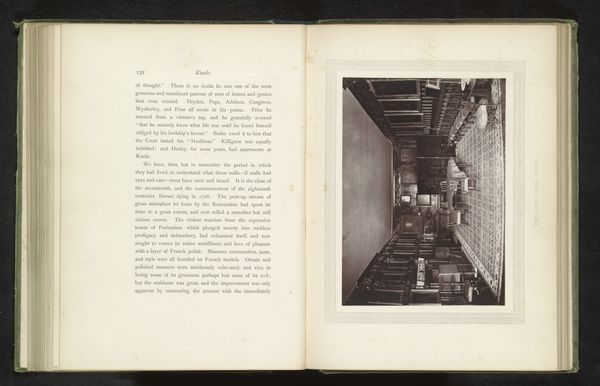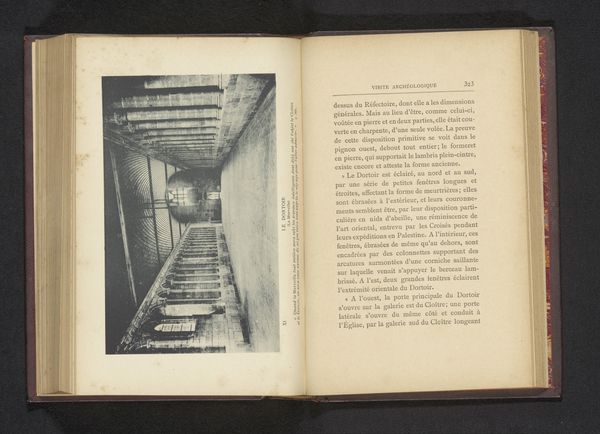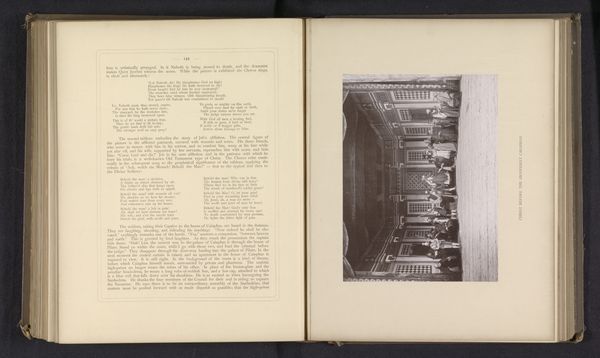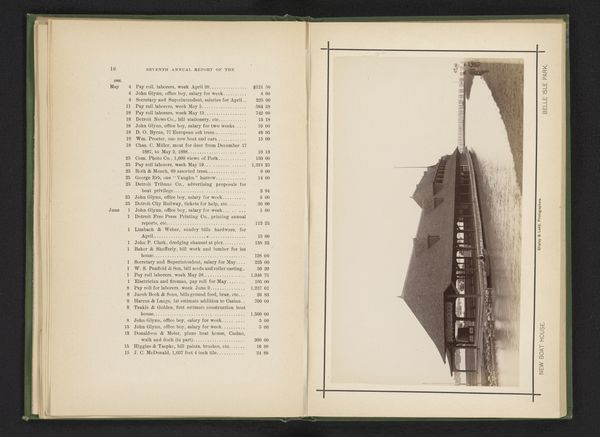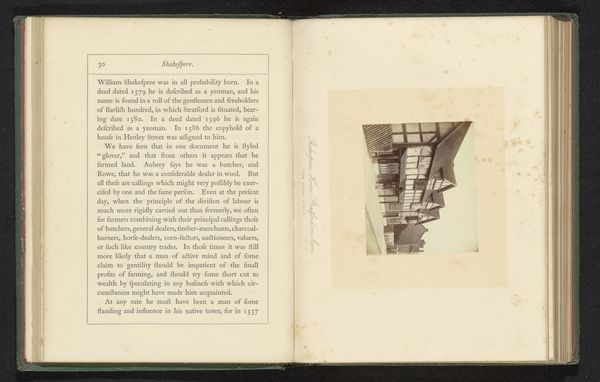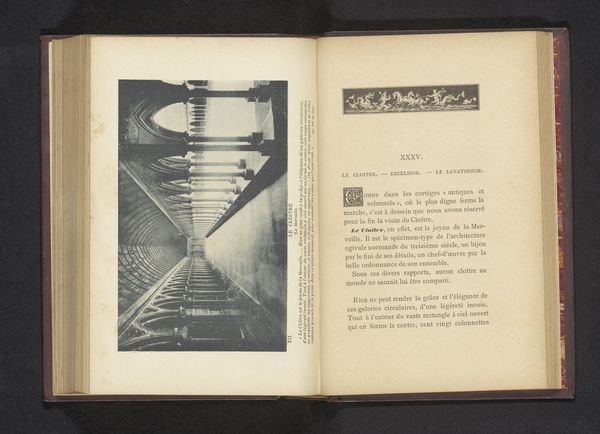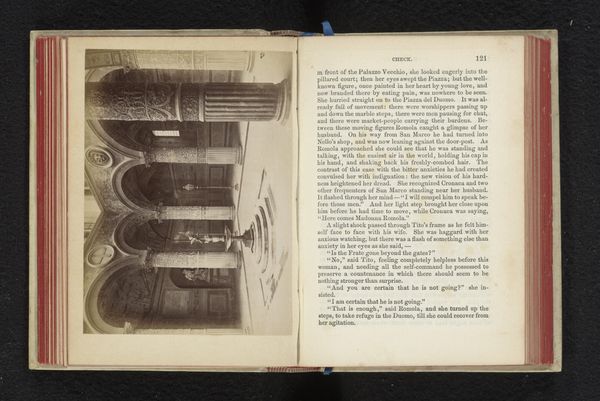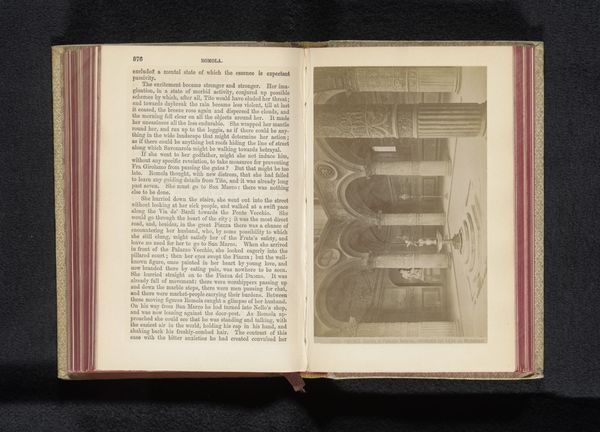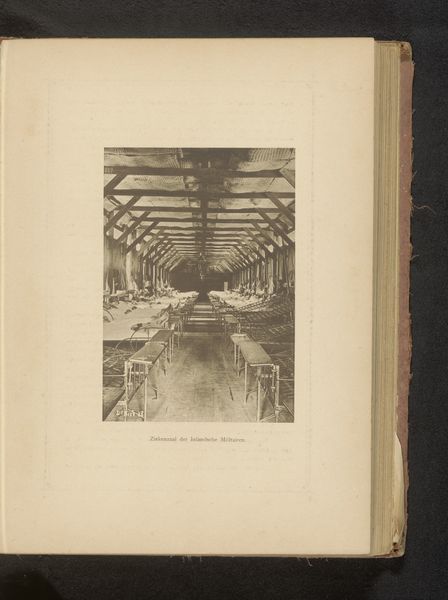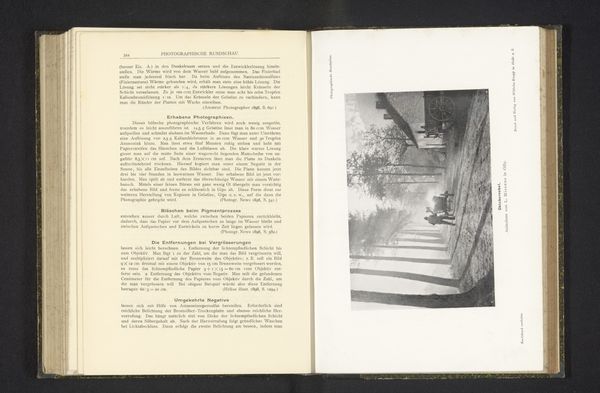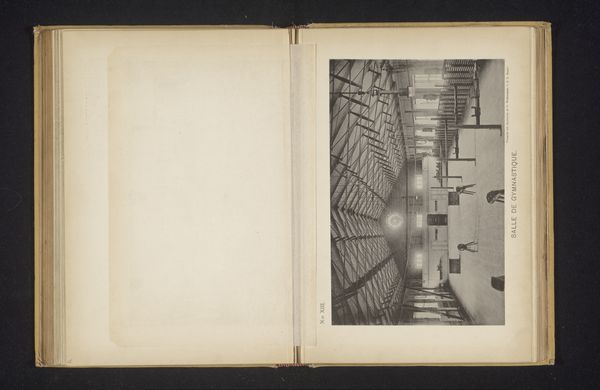
print, photography, gelatin-silver-print
# print
#
landscape
#
photography
#
gelatin-silver-print
#
realism
Dimensions: height 111 mm, width 193 mm
Copyright: Rijks Museum: Open Domain
Curator: We're looking at a gelatin-silver print entitled "Gezicht op een overdekte pier op het Belle Isle Park", taken before 1889 by Shipley & Ladd. What are your initial impressions? Editor: It strikes me as quite sterile and austere, despite depicting what I imagine to be a recreational space. The harsh lines of the pier, rendered in a limited tonal range, give it an almost architectural blueprint quality, highlighting structure over lived experience. Curator: Indeed, the formal qualities are arresting. Note the stark, almost brutalist, composition, dominated by converging lines and the interplay of light and shadow. There's a strong emphasis on geometric form, stripping away any sentimental narrative usually associated with landscape photography of this period. Editor: I’m drawn more to thinking about the labor embedded in creating this space, though. This isn’t just a depiction of a park, it’s a photograph showcasing a constructed leisure environment. The materials—the wood, the iron, the photographic chemicals used—tell a story of industrial progress and manufactured experiences. It also raises questions about who had access to such spaces and the labor required to maintain them. Curator: Certainly, your material analysis reveals a crucial layer. But let’s not disregard the photographic technique itself. The photographers employed a meticulous approach, perhaps using a large format camera to capture this remarkable detail. This rigorous process reinforces a sense of calculated objectivity. The subdued tones serve to amplify this measured quality. Editor: And think about what that technology meant at the time—photography itself as a material process in development. Gelatin silver prints provided higher resolution images but still involved considerable labor in preparation and printing. Its purpose seems promotional and commercial, displaying engineering as something consumable, akin to tourism brochures of the era, meant to be circulated for public and corporate consumption. Curator: That’s an incisive observation! It brings into question photography’s inherent capability of providing "pure" representations, highlighting the contextual complexities. Editor: Yes, stepping back, the piece encapsulates a particular historical moment, emphasizing how constructed landscapes depend on a whole world of materials, means of production and socio-economic practices. Curator: Well, reflecting upon both our interpretations reveals the captivating tension between structural purity and material context. Editor: Yes, seeing that helps bridge how we value images for aesthetics, and what the photograph displays of power in that era.
Comments
No comments
Be the first to comment and join the conversation on the ultimate creative platform.
